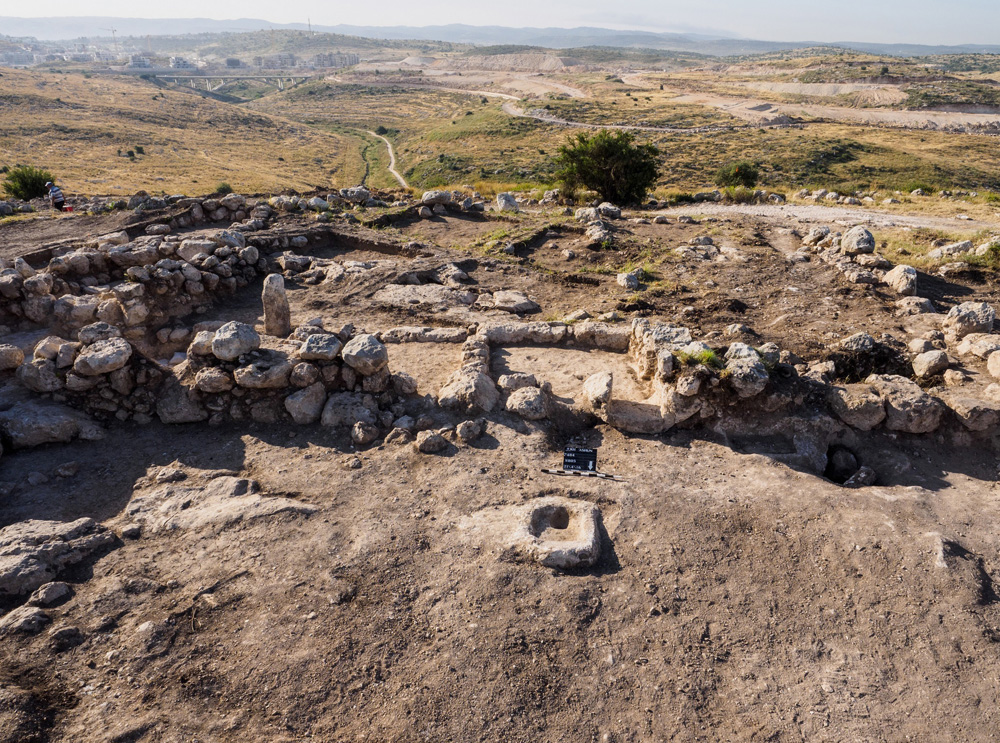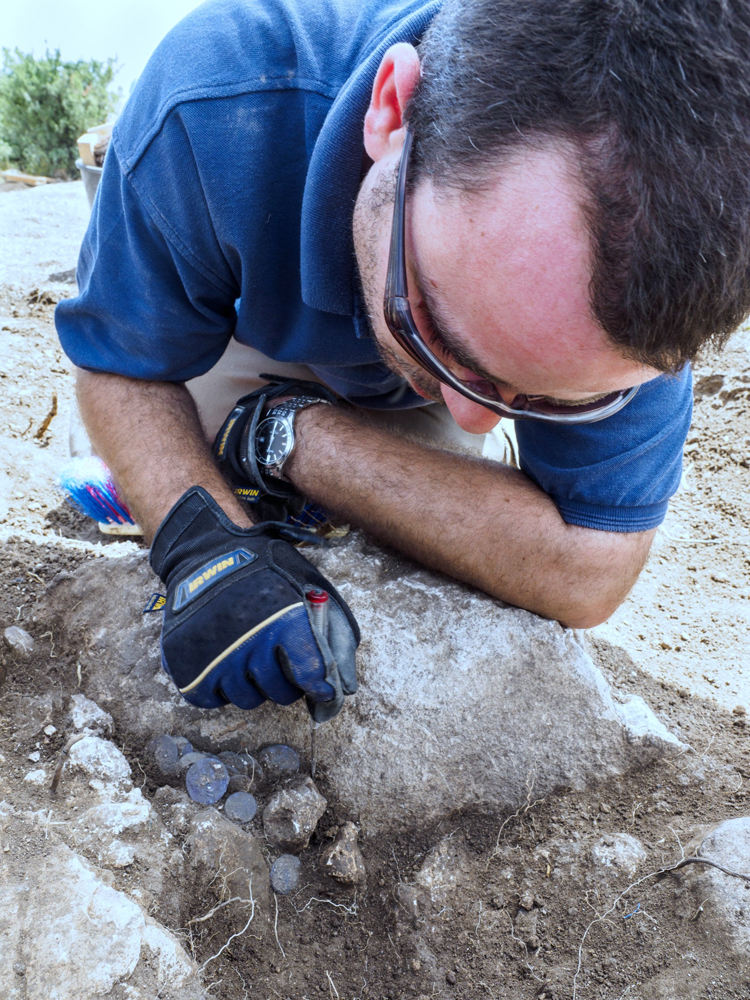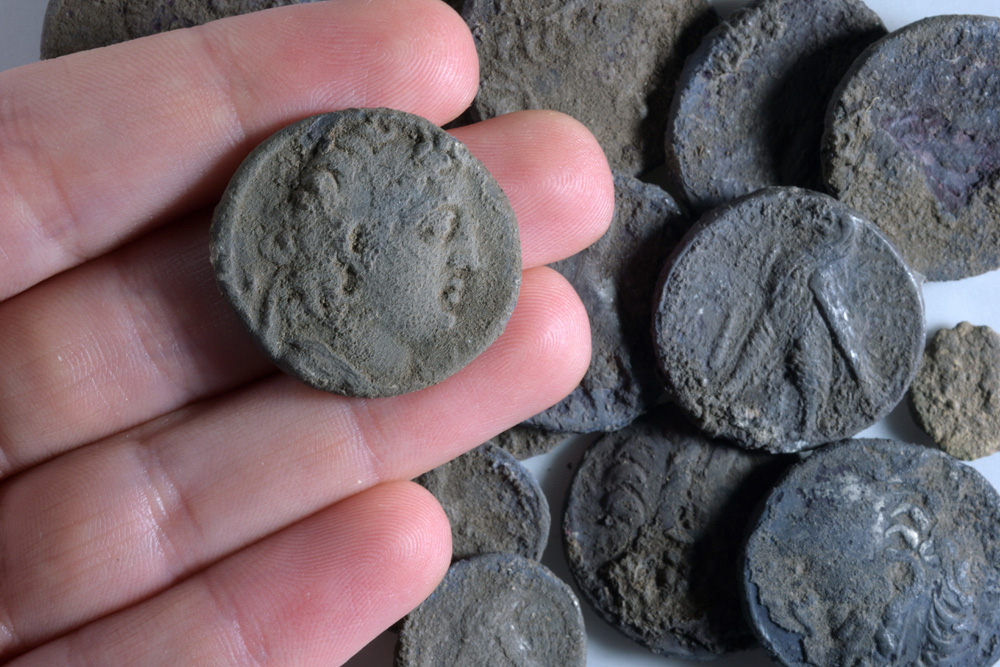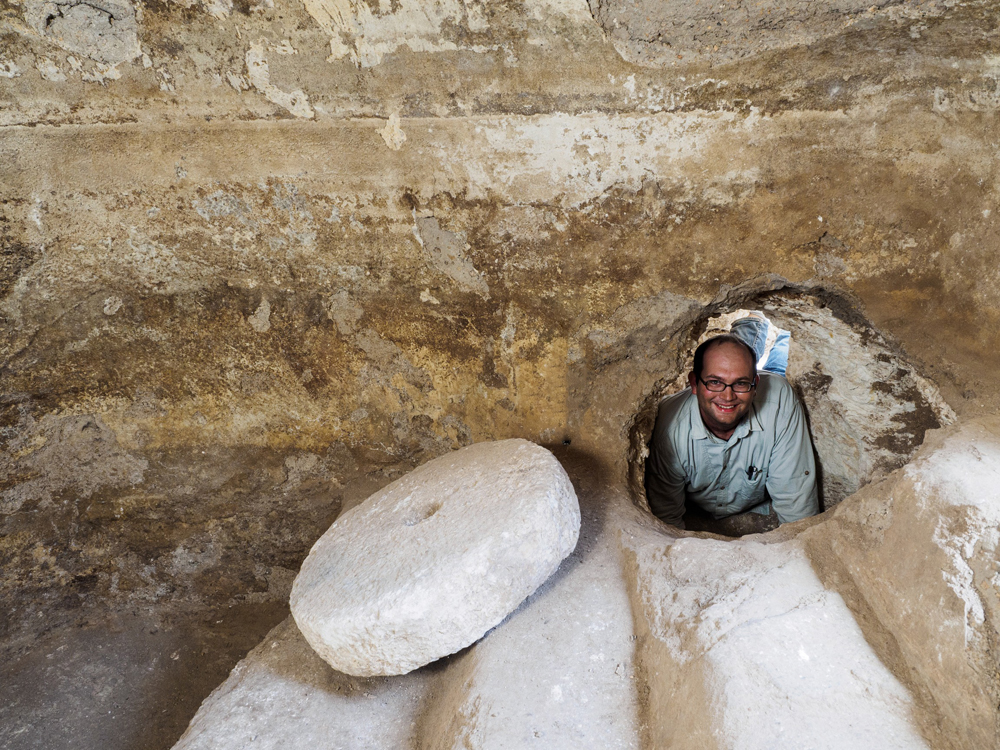Cache of Ancient Silver Coins Found in Israel (Photos)
Hasmonean estate house

Aerial photograph of the agricultural estate house in Modi'in, Israel, dating back to the Hasmonean period — 140 BCE to 116 BCE — where the hidden collection of coins was found.
[Read the full story about the discovery of this ancient coin cache.]
Cache of coins

The cache of silver coins was discovered concealed in a rocky niche in a wall of the ancient estate house, in Modi'in, Israel.
A handful of silver

Archaeologists found 16 silver coins in a hidden cache. They date back to 126 BCE and were stamped with images of King Antiochus VII and his brother, Demetrius II.
Uncovering the hoard

Israel Antiquities Authority (IAA) archaeologist Shahar Krispin, during the discovery of the silver coin hoard.
Retrieving the coins

IAA archaeologist Shahar Krispin examines the cache of coins — concealed for more than 2,000 years — which included shekels and half-shekels (tetradrachms and didrachms).
[Read the full story about the discovery of this ancient coin cache.]
Get the world’s most fascinating discoveries delivered straight to your inbox.
King Antiochus VII

A coin of Antiochus VII, and the rest of the coins that were discovered in the hidden cache, which archaeologists say were likely minted in Tyre, a Phoenician port city.
A chalk cup from the time of the Second Temple period

IAA archaeologist Jenny Marcus holds a chalk cup from the time of the Second Temple — 530 BCE to 70 BCE — which was unearthed in the estate house. According to Jewish law, vessels made of chalk cannot become ritually unclean.
A place to hide

Abraham Tendler, the excavation director, inside a hiding refuge that was connected to a ritual bath known as a (miqwe), during the Bar Kokhba uprising (132 CE to 136 CE).
[Read the full story about the discovery of this ancient coin cache.]

Mindy Weisberger is a science journalist and author of "Rise of the Zombie Bugs: The Surprising Science of Parasitic Mind-Control" (Hopkins Press). She formerly edited for Scholastic and was a channel editor and senior writer for Live Science. She has reported on general science, covering climate change, paleontology, biology and space. Mindy studied film at Columbia University; prior to LS, she produced, wrote and directed media for the American Museum of Natural History in NYC. Her videos about dinosaurs, astrophysics, biodiversity and evolution appear in museums and science centers worldwide, earning awards such as the CINE Golden Eagle and the Communicator Award of Excellence. Her writing has also appeared in Scientific American, The Washington Post, How It Works Magazine and CNN.


